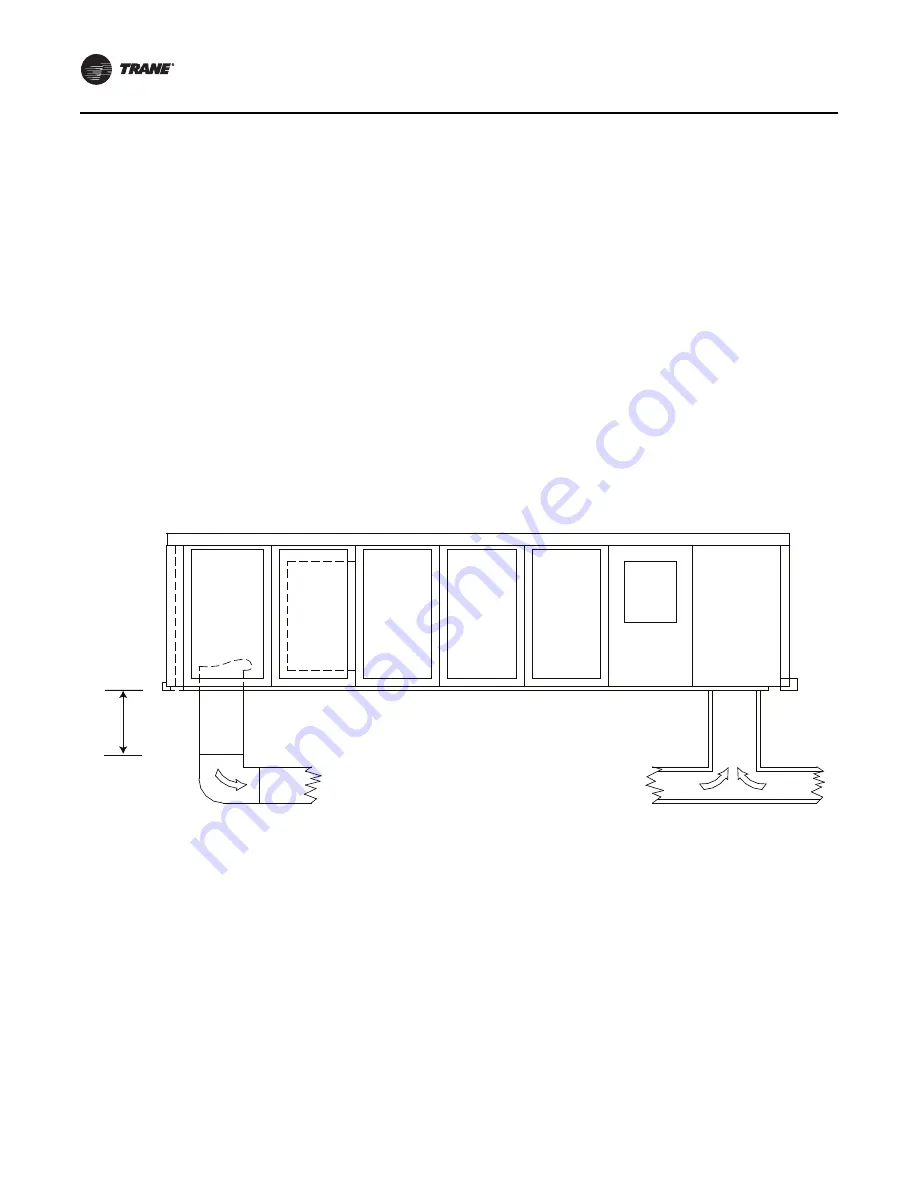
Installation
14
CLCH-SVN05C-EN
a small air leak between the duct and the deck will destroy
most of the attenuation available from the steel decking.
In addition, special consideration may be required to
ensure that the weight of the unit does not crush the roof
deck at those points where the deck is between the curb
and support joist. Poured insulation will usually add the
required strength, while the use of rigid insulation may
require placement of three-inch support channels on the
decking.
As a general rule, exhaust fan noise is not a problem and
can be adequately attenuated by the return ductwork. For
critical applications where return ductwork is not required,
however, installation of an acoustically-lined “return T” is
recommended; see
Figure 21
.
Supply and Return Air Ductwork
Ductwork for all units must be fabricated and installed by
the installing contractor; to ensure proper duct
construction and installation, SMACNA recommendations
should be closely followed.
Below are several typically used guidelines for ductwork
construction:
•
Elbows with turning vanes or splitters are
recommended to minimize air noise and resistance.
•
The first elbow in the ductwork leaving the unit should
be no closer than 3 fan diameters from the unit,
thereby minimizing noise and resistance.
In those instances where the unit is installed over an
acoustically critical area, additional treatment of the
ductwork is recommended. Both supply and return
ductwork should be lined internally with glass fiber duct
liner 1-inch thick. The external surface of the supply duct
should be covered with an acoustical barrier material such
as one or two pound/sq. ft. sheet lead (1/64-inch or 1/32-
inch) or loaded vinyl sheet or gypsum board for the first 10
ft. of ductwork. The lining should extend from the point
where the duct penetrates the roof to a distance of 10 ft.
beyond the vertical drop from the unit.
Figure 21.
Typical supply and return ductwork
Coil
space
Vertical
discharge
3 fan
diameters
Return
air
Use lined duct for all returns (1-inch thick, 6-pound density fiberglass recommended).




























